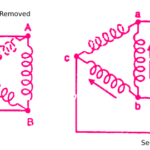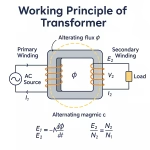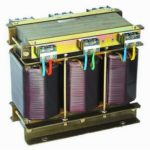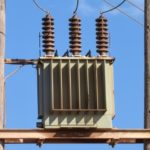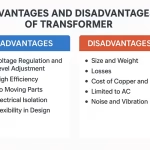The Delta-Delta (Δ–Δ) connection is a widely adopted transformer configuration used in large, low-voltage transformer systems. It is especially economical and reliable in installations where insulation requirements are not critical. This article provides a comprehensive explanation of the Δ–Δ connection in three-phase transformers, its working principle, key advantages, and its role in unbalanced load handling and open-delta operation.
What is Delta-Delta (Δ–Δ) Transformer Connection?
In this configuration, both the primary and secondary windings of the transformer are connected in a delta (Δ) arrangement. Each winding forms a closed loop, with the ends connected in a triangle. This results in three interconnected phases capable of handling high loads with minimal phase displacement or voltage distortion.
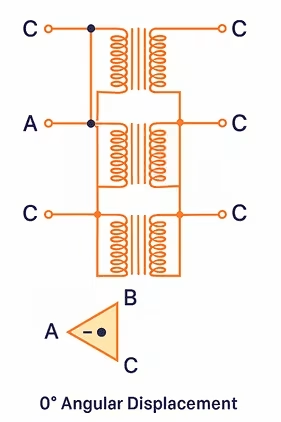
Working Principle
In a Δ–Δ transformer connection, the transformation ratio between primary and secondary line voltage is identical to that of each individual transformer. The voltage triangles for the primary (ABC) and secondary (abc) maintain the same orientation, resulting in zero angular displacement (0°) between the two sides, as shown.
This connection ensures no internal phase shift between the phase and line voltages, unlike the Y–Y connection where such a shift typically occurs.
Advantages of Delta-Delta Transformer Connection
1. Supports Third Harmonic Current Circulation:
For the output voltage to be sinusoidal, the transformer’s magnetizing current must include a third harmonic component. In a Δ–connected transformer, this third harmonic component does not flow into the line wires. Instead, it circulates within the closed delta loop. Since the three phases are spaced 120° apart (resulting in a total of 360° for the third harmonic), this circulation balances the system and ensures sinusoidal flux and voltage waveforms.
2. Excellent Performance Under Unbalanced Loads:
Unlike the Y–Y connection, which can experience difficulties with load imbalance, the Δ–Δ system maintains nearly constant three-phase voltages regardless of load conditions. This makes it highly reliable for industrial and power distribution systems where load variations are frequent.
3. Open-Delta (V–V) Operation During Transformer Failure:
A major advantage of this configuration is its ability to continue operation even if one of the transformers fails. In such cases, the system operates in an open-delta or V–V connection mode. Although the capacity is reduced, the system still delivers power. The reduced capacity is 58% of the full rating—not 66.7% as commonly assumed—ensuring continued service without complete shutdown. This feature adds redundancy and fault tolerance to the system.
Applications of Δ–Δ Transformer Connections
- Used in large, low-voltage power distribution where cost-efficiency is vital.
- Ideal for industrial settings with fluctuating or unbalanced loads.
- Applicable in transformer banks with backup open-delta operation.
- Preferred in installations where insulation issues are not urgent.
Conclusion
The Delta-Delta (Δ–Δ) transformer connection is an economical and effective solution for three-phase power transformation, particularly in low-voltage, high-load systems. It offers robust performance under unbalanced loads, supports harmonic current circulation for clean waveforms, and allows continued operation in case of transformer failure. These features make Δ–Δ a popular and practical choice for electrical engineers working in real-world power systems.
FAQs
Q1. Why is there no angular displacement in a Delta-Delta transformer?
Because both the primary and secondary windings are connected in the same delta configuration, the phase sequence and angular positions remain unchanged, resulting in 0° displacement.
Q2. What happens if one transformer fails in a Δ–Δ system?
The system can still operate in open-delta (V–V) mode with 58% capacity, providing partial power without complete interruption.
Q3. Is Delta-Delta connection suitable for high-voltage systems?
It is generally preferred for low-voltage systems. For high-voltage applications, insulation and neutral grounding considerations may favor Y-connected configurations.
Keywords: delta-delta transformer, delta connection transformer, three-phase transformer connection, transformer harmonic suppression, open-delta operation, unbalanced load transformer, Δ–Δ transformer working
